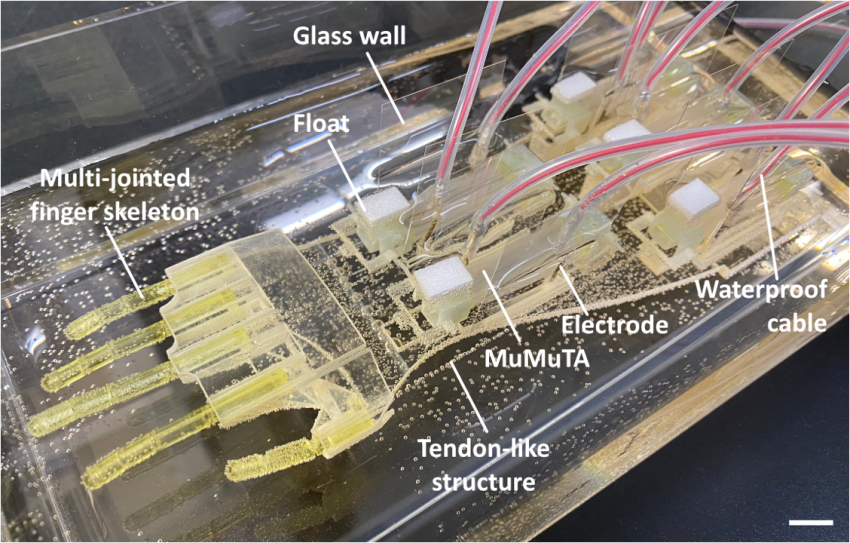A team of researchers in Japan says it has developed a robot hand that moves using cultivated human muscle tissues and is the largest of its kind yet developed, with the hope of applying the technology to prosthetic hands.
The biohybrid hand has five fingers that move individually using multiple joints and can perform complex finger movements, such as grasping and moving the tip of a small object, said the researchers at the University of Tokyo and Waseda University. It measures 18 centimeters in length, including a forearm section.
Like muscle tissues in human bodies, the contracting force of the robot's tissues decreased and showed signs of fatigue after 10 minutes of action but recovered after an hour of rest, the team said.
Previous biohybrid devices could only make a single-joint movement and were limited to about 1 cm in size as thick muscle tissues for moving larger limbs suffered tissue loss due to nutrients not reaching the center.
The team addressed the problem by bundling together multiple thin strings of muscle tissues into a sushi roll formation to act as one larger muscle. As such design ensures nutrients reach each string, these tissues had enough strength to allow the robotic hand to move.
Shoji Takeuchi, a University of Tokyo professor specializing in mechanical engineering, said the research sets the path toward increasing muscle strength in a biohybrid robot hand.
"It could lead to realizing a humanlike robot or a precision prosthetic hand," Takeuchi said.
The team' findings were published in the journal Science Robotics on Feb 12.
© KYODO




3 Comments
Login to comment
TaiwanIsNotChina
It seems mechanical engineers can't really replicate the sophistication of the human hand but is introducing poorly understood biological components really going help?
sakurasuki
It's not about practical use, it's all about scientific paper submission. None of that researcher from corporate world.
divinda
Didn't Terminator also begin with just the hand?